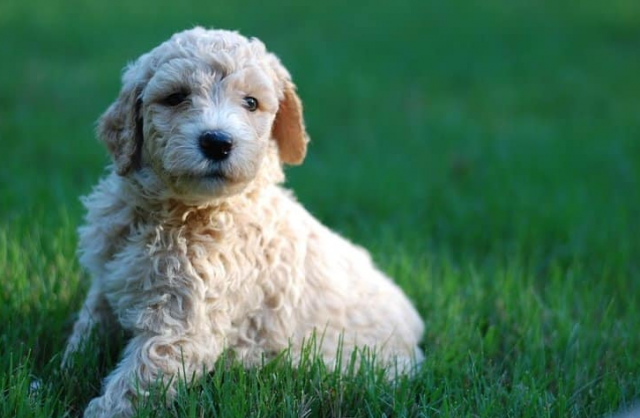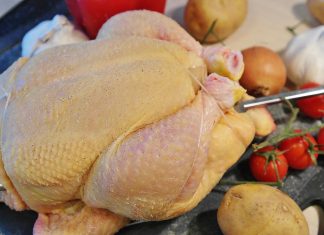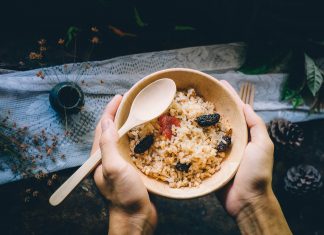Goldendoodles have captured the hearts of dog lovers worldwide due to their intelligence, affectionate nature, and low-shedding coats. Whether you're considering getting a Goldendoodle or thinking about breeding one, an important question to ask is: What is the average Goldendoodle litter size? Understanding the average litter size helps prepare breeders and owners for the arrival of puppies and provides valuable insights into the breeding process.
In this comprehensive blog post, we will explore the average litter size for Goldendoodles, the factors that influence litter size, and what you can expect when raising a Goldendoodle litter.
Average Goldendoodle Litter Size: The Numbers
Goldendoodles, being a crossbreed between Golden Retrievers and Poodles, inherit various traits from both parents. These traits include size, temperament, and reproductive characteristics. On average, a Goldendoodle litter size ranges from 4 to 8 puppies. However, there are several factors that can cause variation in this number, and the specific litter size may depend on the size of the parent dogs, their health, age, and other genetic factors.
Goldendoodles are classified into different size categories—Standard, Miniature, and Toy—based on the size of the Poodle parent. Each size category tends to produce slightly different litter sizes:
- Standard Goldendoodles: Typically, the largest variety of Goldendoodles, they are bred from a Standard Poodle and a Golden Retriever. The average litter size for Standard Goldendoodles is between 6 to 8 puppies, with some litters even reaching up to 10 puppies. Larger dogs tend to have larger litters, and this holds true for the Standard Goldendoodle.
- Miniature Goldendoodles: These dogs result from crossing a Miniature Poodle with a Golden Retriever. Mini Goldendoodles tend to have smaller litters compared to their Standard counterparts, averaging between 4 to 6 puppies per litter.
- Toy Goldendoodles: The smallest variation, Toy Goldendoodles, are bred from a Toy Poodle and a smaller Golden Retriever. Due to their size, Toy Goldendoodles generally have the smallest litter size, typically producing 3 to 4 puppies on average.
Factors That Influence Goldendoodle Litter Size
While the average Goldendoodle litter size falls between 4 to 8 puppies, several factors can influence how many puppies a Goldendoodle will have in a single litter. These factors include:
1. Size of the Mother (Dam)
The size of the dam plays a crucial role in determining the size of the litter. Larger dogs, such as Standard Goldendoodles, have larger wombs, which allows them to carry more puppies. Miniature and Toy Goldendoodles have smaller wombs, which naturally results in smaller litter sizes.
2. Age of the Dam
Age is another significant factor when it comes to litter size. Younger dogs (usually between 2 and 5 years old) tend to have larger litters, as this is the peak reproductive age for most dogs. First-time mothers may have smaller litters compared to later pregnancies. As the dog ages, the number of puppies per litter may decrease.
3. Health and Nutrition
A healthy dog is more likely to have a healthy, sizable litter. Dams that are in good physical condition and receive proper nutrition during pregnancy are more likely to carry more puppies to term. Poor health, stress, and inadequate nutrition can reduce the size of the litter or lead to complications during pregnancy and delivery.
Ensuring that the mother dog receives a balanced diet rich in essential nutrients before and during pregnancy is key to supporting a successful, healthy litter. Regular veterinary check-ups and prenatal care are essential.
4. Genetics and Lineage
The genetic makeup of both the dam and the sire (father) also affects the litter size. If a dam comes from a lineage of dogs known for having larger litters, she is more likely to have larger litters herself. Conversely, if her genetic history shows smaller litters, this trait may be passed on to her as well.
5. Breeding Method
The method of conception can also influence the number of puppies in a litter. Natural mating tends to result in larger litters compared to artificial insemination, which sometimes has lower success rates. Breeders who carefully time the mating process to coincide with the dam's most fertile days also improve the chances of a larger litter.
6. Timing of Breeding
Timing is critical when it comes to breeding dogs. Breeding too early or too late in the female's reproductive cycle can reduce the number of fertilized eggs, which will, in turn, reduce litter size. A veterinarian can help breeders pinpoint the optimal time for breeding by monitoring hormone levels and signs of ovulation.
What to Expect During a Goldendoodle Pregnancy
After a successful mating, the pregnancy of a Goldendoodle lasts around 63 days, similar to other dog breeds. During this time, you will notice changes in the dam's behavior and physical appearance. She may become more affectionate, begin nesting, and her appetite may increase. Her abdomen will gradually enlarge as the puppies grow.
As the due date approaches, a veterinarian can perform an ultrasound or X-ray to determine how many puppies the dam is carrying. This information helps breeders prepare for the upcoming birth, ensuring they have enough resources and space to accommodate the newborn puppies.
Raising a Goldendoodle Litter
Once the puppies are born, caring for the litter is a critical responsibility. Newborn puppies require constant care and attention, particularly in the first few weeks of life. The dam will do most of the work—feeding and cleaning the puppies—but owners and breeders must ensure that all puppies are feeding properly and staying warm.
Here are some key aspects of raising a Goldendoodle litter:
- Nutrition: Ensure the dam has a nutrient-rich diet during and after pregnancy to support milk production for the puppies.
- Health Checks: Regularly monitor the puppies for any signs of illness or failure to thrive. A veterinarian should check the puppies to ensure they are healthy and growing properly.
- Socialization: Early socialization is important to raise well-adjusted dogs. Expose the puppies to different environments, people, and other animals to help them become confident and well-behaved as they grow.
Conclusion
In conclusion, the average Goldendoodle litter size ranges from 4 to 8 puppies, though this can vary depending on the size of the parents, the dam's age and health, and other genetic factors. Standard Goldendoodles tend to have larger litters, while Miniature and Toy Goldendoodles typically have smaller ones.






